Anchen Li
Incomplete Graph Learning: A Comprehensive Survey
Feb 18, 2025Abstract:Graph learning is a prevalent field that operates on ubiquitous graph data. Effective graph learning methods can extract valuable information from graphs. However, these methods are non-robust and affected by missing attributes in graphs, resulting in sub-optimal outcomes. This has led to the emergence of incomplete graph learning, which aims to process and learn from incomplete graphs to achieve more accurate and representative results. In this paper, we conducted a comprehensive review of the literature on incomplete graph learning. Initially, we categorize incomplete graphs and provide precise definitions of relevant concepts, terminologies, and techniques, thereby establishing a solid understanding for readers. Subsequently, we classify incomplete graph learning methods according to the types of incompleteness: (1) attribute-incomplete graph learning methods, (2) attribute-missing graph learning methods, and (3) hybrid-absent graph learning methods. By systematically classifying and summarizing incomplete graph learning methods, we highlight the commonalities and differences among existing approaches, aiding readers in selecting methods and laying the groundwork for further advancements. In addition, we summarize the datasets, incomplete processing modes, evaluation metrics, and application domains used by the current methods. Lastly, we discuss the current challenges and propose future directions for incomplete graph learning, with the aim of stimulating further innovations in this crucial field. To our knowledge, this is the first review dedicated to incomplete graph learning, aiming to offer valuable insights for researchers in related fields.We developed an online resource to follow relevant research based on this review, available at https://github.com/cherry-a11y/Incomplete-graph-learning.git
A Novel Neural-symbolic System under Statistical Relational Learning
Sep 16, 2023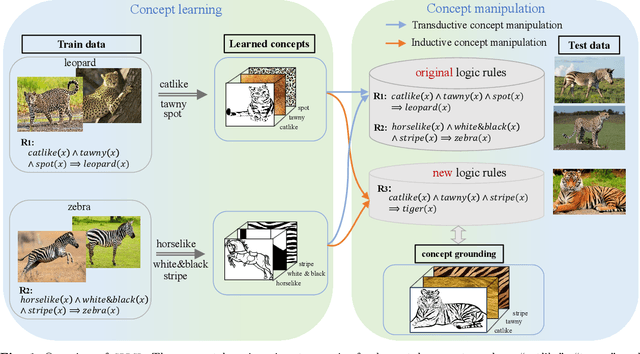

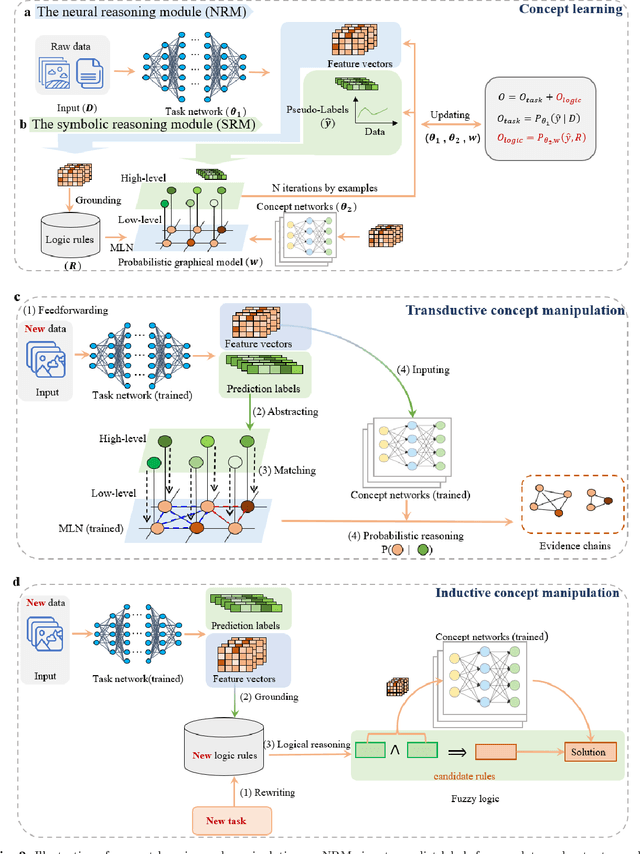
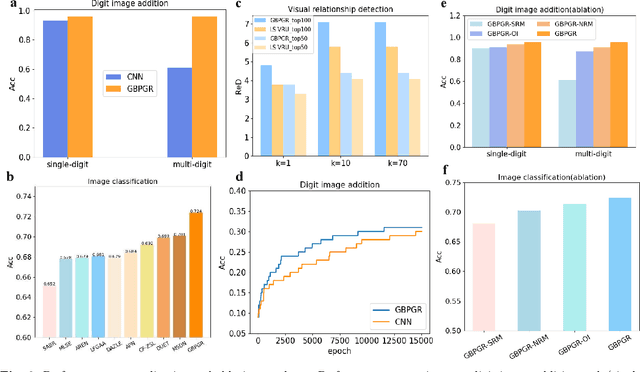
Abstract:A key objective in field of artificial intelligence is to develop cognitive models that can exhibit human-like intellectual capabilities. One promising approach to achieving this is through neural-symbolic systems, which combine the strengths of deep learning and symbolic reasoning. However, current approaches in this area have been limited in their combining way, generalization and interpretability. To address these limitations, we propose a general bi-level probabilistic graphical reasoning framework called GBPGR. This framework leverages statistical relational learning to effectively integrate deep learning models and symbolic reasoning in a mutually beneficial manner. In GBPGR, the results of symbolic reasoning are utilized to refine and correct the predictions made by the deep learning models. At the same time, the deep learning models assist in enhancing the efficiency of the symbolic reasoning process. Through extensive experiments, we demonstrate that our approach achieves high performance and exhibits effective generalization in both transductive and inductive tasks.
CDRec: Cayley-Dickson Recommender
Jan 14, 2022



Abstract:In this paper, we propose a recommendation framework named Cayley-Dickson Recommender. We introduce Cayley-Dickson construction which uses a recursive process to define hypercomplex algebras and their mathematical operations. We also design a graph convolution operator to learn representations in the hypercomplex space. To the best of our knowledge, it is the first time that Cayley-Dickson construction and graph convolution techniques have been used in hypercomplex recommendation. Compared with the state-of-the-art recommendation methods, our method achieves superior performance on real-world datasets.
Hyperbolic Neural Collaborative Recommender
Apr 15, 2021



Abstract:This paper explores the use of hyperbolic geometry and deep learning techniques for recommendation. We present Hyperbolic Neural Collaborative Recommender (HNCR), a deep hyperbolic representation learning method that exploits mutual semantic relations among users/items for collaborative filtering (CF) tasks. HNCR contains two major phases: neighbor construction and recommendation framework. The first phase introduces a neighbor construction strategy to construct a semantic neighbor set for each user and item according to the user-item historical interaction. In the second phase, we develop a deep framework based on hyperbolic geometry to integrate constructed neighbor sets into recommendation. Via a series of extensive experiments, we show that HNCR outperforms its Euclidean counterpart and state-of-the-art baselines.
HSR: Hyperbolic Social Recommender
Feb 15, 2021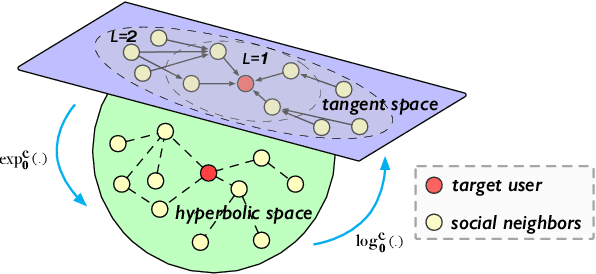

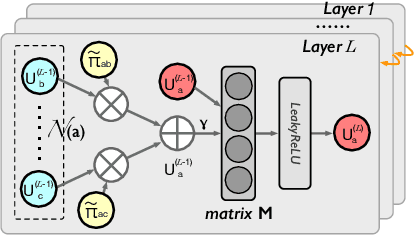

Abstract:With the prevalence of online social media, users' social connections have been widely studied and utilized to enhance the performance of recommender systems. In this paper, we explore the use of hyperbolic geometry for social recommendation. We present Hyperbolic Social Recommender (HSR), a novel social recommendation framework that utilizes hyperbolic geometry to boost the performance. With the help of hyperbolic spaces, HSR can learn high-quality user and item representations for better modeling user-item interaction and user-user social relations. Via a series of extensive experiments, we show that our proposed HSR outperforms its Euclidean counterpart and state-of-the-art social recommenders in click-through rate prediction and top-K recommendation, demonstrating the effectiveness of social recommendation in the hyperbolic space.
 Add to Chrome
Add to Chrome Add to Firefox
Add to Firefox Add to Edge
Add to Edge